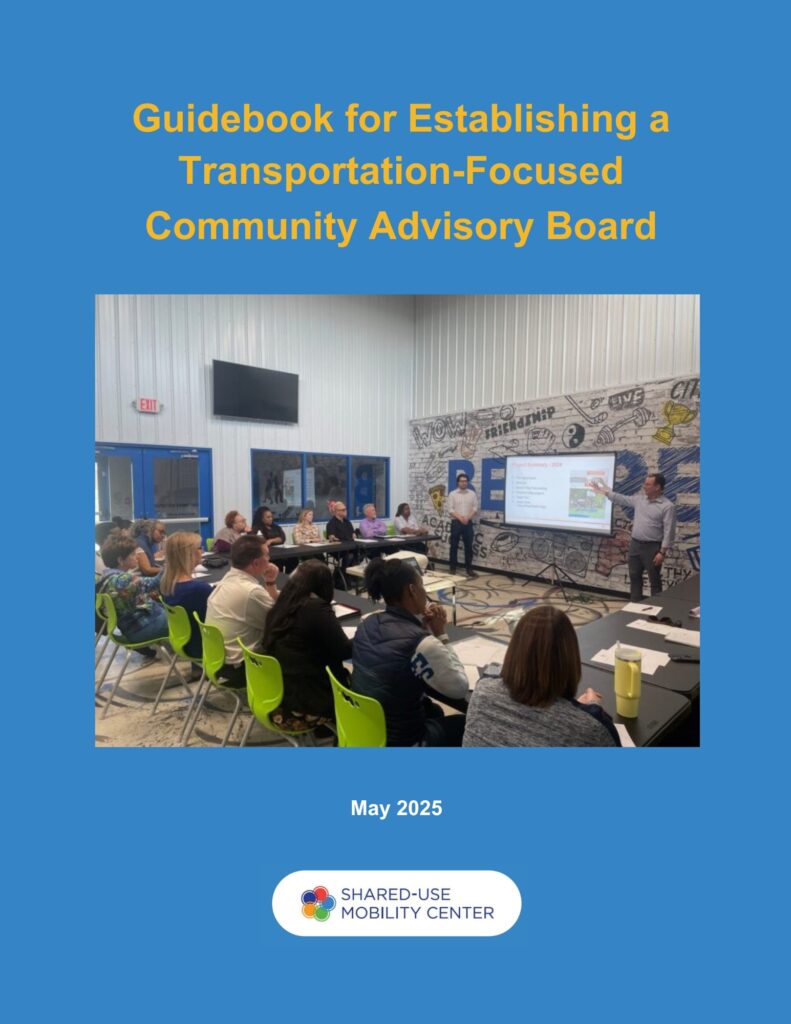Community Advisory Board Guidebook
Guidebook for Establishing a Transportation-Focused Community Advisory Board
May 2025
About this Guidebook
Through the US Department of Transportation’s Thriving Communities Program, The Shared-Use Mobility Center (SUMC) worked with the City of Waukegan, IL, on various transportation, infrastructure, and community engagement initiatives. Community engagement, in particular, was identified as a major barrier faced by the city. Waukegan has a large population of historically marginalized and underserved residents and, like many other cities in the country, has struggled to create and maintain forums for meaningful community engagement built on trust among local stakeholders.
Hearing these concerns, SUMC helped connect the city with resources and opportunities to develop its community engagement strategy and explore ways to build trust, incorporate community input, and foster effective and meaningful engagement.
A Community Advisory Board (CAB) was identified as one potentially effective resource in the community engagement toolbox. They provide a model for meaningful participation by allowing different community organizations and local stakeholders a forum to regularly discuss transportation projects and address barriers in a more comprehensive and consequential way.
This guidebook was developed as an effort to provide a roadmap to form and sustain a CAB.
Why Use this Guidebook
Communities across the country struggle to achieve regular, meaningful feedback from their communities to inform transportation projects. While traditional community engagement strategies like surveys and tabling at events can be effective methods to collect community feedback, they do not provide a consistent and recurrent forum to discuss projects and plans. CABs can enable a broader representation of different local stakeholders, and can complement other public forums to inform transportation and infrastructure planning.
This guidebook is a roadmap that provides a starting point for cities and communities to plan, launch, and sustain a CAB for transportation. It includes resources, examples, and tools from local governments, transit agencies, metropolitan planning organizations, and other organizing entities. This guidebook can be used by communities of different sizes and contexts. The guidebook also contains an accompanying checklist that can be used as a tool to guide decision making and track progress made during the development of the CAB.
